Contents
- 1 ↣ Shirakami-Sanchi Aoike Pond [Aomori Prefecture]
- 2 ↣ Ouchi-juku [Fukushima Prefecture]
- 3 ↣ Yume no Tsuribashi suspension bridge [Shizuoka Prefecture]
- 4 ↣ Shiroyone Senmaida Rice Terraces [Ishikawa Prefecture]
- 5 ↣ Arashiyama Bamboo Grove [Kyoto Prefecture]
- 6 ↣ Tsunoshima Ohashi Bridge [Yamaguchi Prefecture]
- 7 ↣ Angel Road [Kagawa Prefecture]
- 8 ↣ Itoshima Peninsula [Fukuoka Prefecture]
- 9 ↣ Shikisai no Oka [Hokkaido]
- 10 ↣ Ginzan Onsen [Yamagata Prefecture]
- 11 ↣ Hitachi Seaside Park [Ibaraki Prefecture]
- 12 ↣ Arakurayama Sengen Park [Yamanashi Prefecture]
- 13 ↣ Kamikochi [Nagano Prefecture]
- 14 ↣ Jigoku Nozoki [Chiba Prefecture]
- 15 ↣ Tottori Sand Dunes [Tottori Prefecture]
- 16 ↣ Takachiho Gorge [Miyazaki Prefecture]
- 17 ↣ Narai-juku [Nagano Prefecture]
↣ Shirakami-Sanchi Aoike Pond [Aomori Prefecture]

Shirakami-Sanchi Aoike Pond, also known as Aoike Pond or Blue Pond, is a picturesque natural attraction in the Shirakami-Sanchi region of Aomori Prefecture, Japan. Shirakami-Sanchi is a UNESCO World Heritage Site renowned for its pristine beech forest and diverse ecosystem.
Aoike Pond is characterized by its striking blue color, caused by the unique minerals and reflection of light in the water. The pond is surrounded by lush green vegetation, creating a beautiful contrast against the vibrant blue hue. The scenery is enchanting during autumn when the surrounding trees change colors, adding further charm to the landscape.
↣ Ouchi-juku [Fukushima Prefecture]
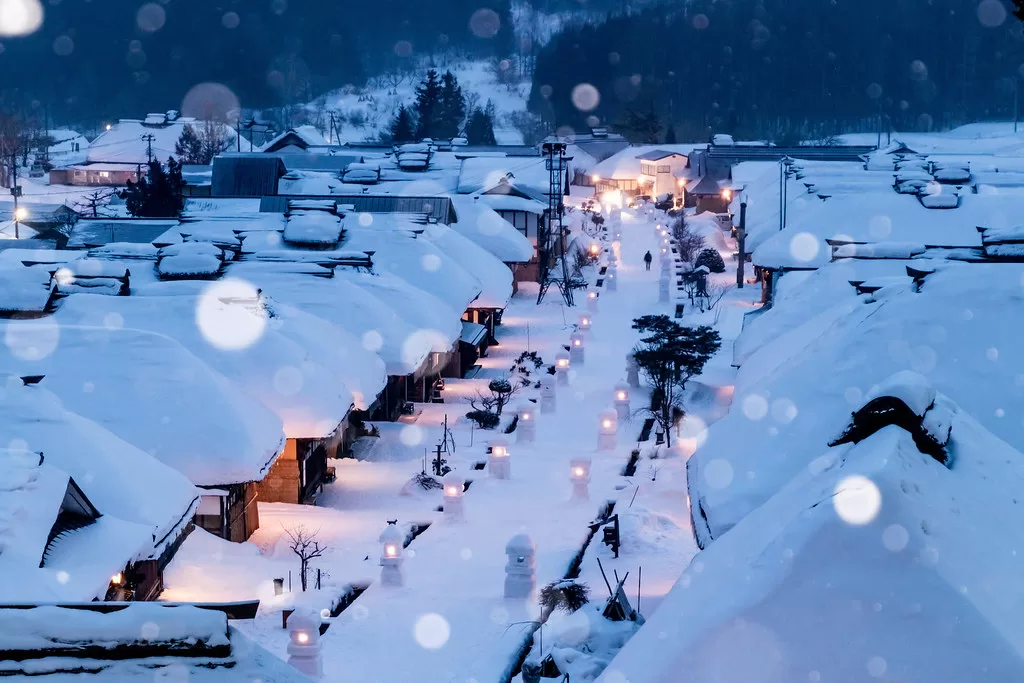
It is a resting place along the Aizu-Nishi Kaido, an old trade route that connected Aizu Wakamatsu with Nikko during the Edo period (1603-1868). Ouchi-juku has retained its traditional atmosphere, and visiting the town feels like stepping back in time.
The main feature of Ouchi-juku is its row of thatched-roof buildings called “Minka.” This Minka served as inns and shops for travelers passing through the area. Today, many of these buildings have been preserved and converted into restaurants, souvenir shops, and guesthouses. The thatched roofs, narrow streets, and Edo period-style architecture create a nostalgic ambiance that attracts tourists and history enthusiasts.
Ouchi-juku is famous for its winter scenery; heavy snowfall covers the town, giving it a magical appearance. During this time, straw ropes with snow are hung across the streets to prevent the roofs from collapsing under the weight of the snow, adding to the town’s charm.
↣ Yume no Tsuribashi suspension bridge [Shizuoka Prefecture]
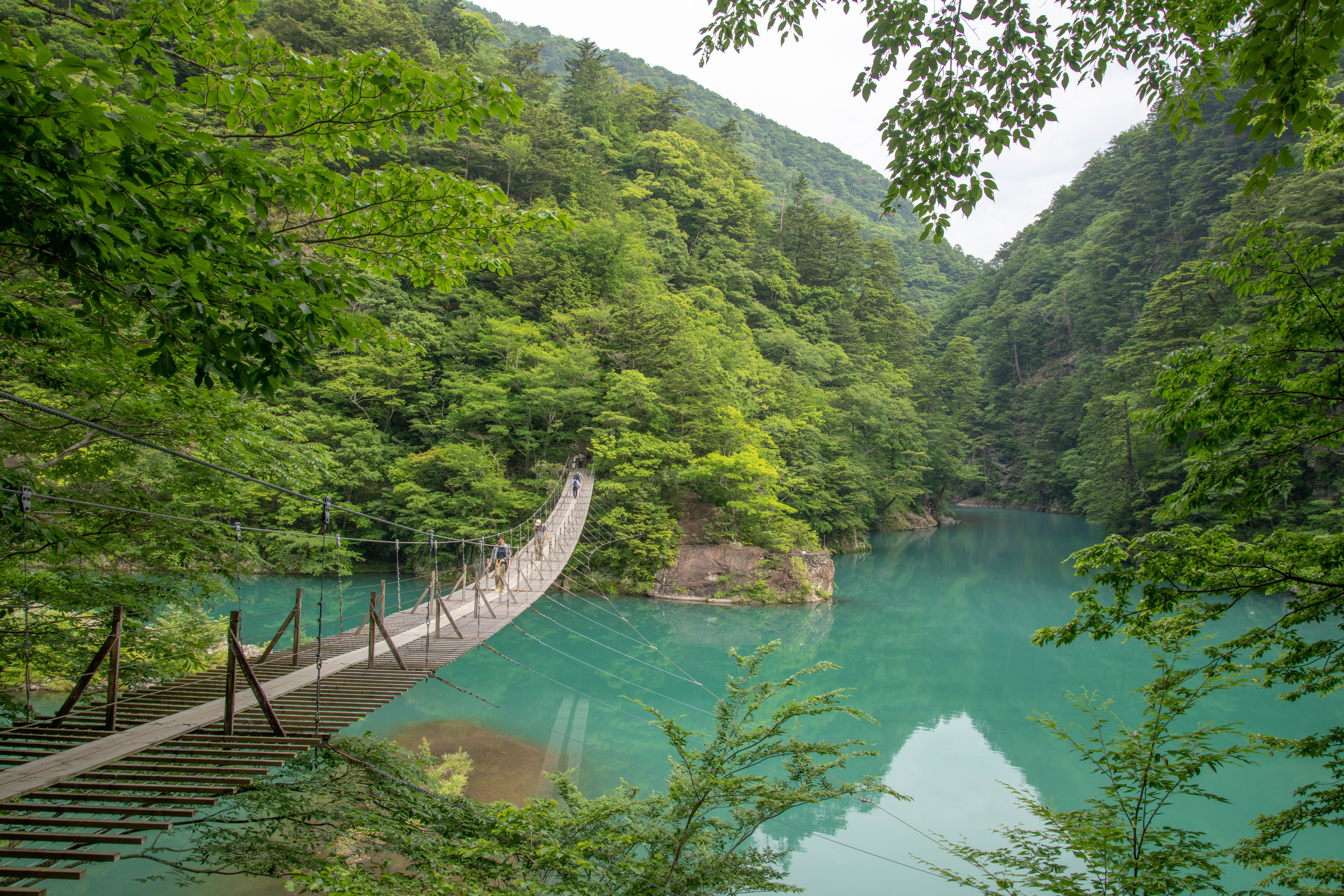
The bridge is 90 meters long and offers a thrilling experience as it sways gently while you walk across it. This suspension bridge is particularly popular in autumn when the foliage transforms into vibrant red, orange, and yellow shades.
It’s a great spot for photography, nature enthusiasts, and those seeking adventure. The bridge also provides access to hiking trails that lead to other parts of the Kunōzan Tōshō-gū shrine complex.
↣ Shiroyone Senmaida Rice Terraces [Ishikawa Prefecture]
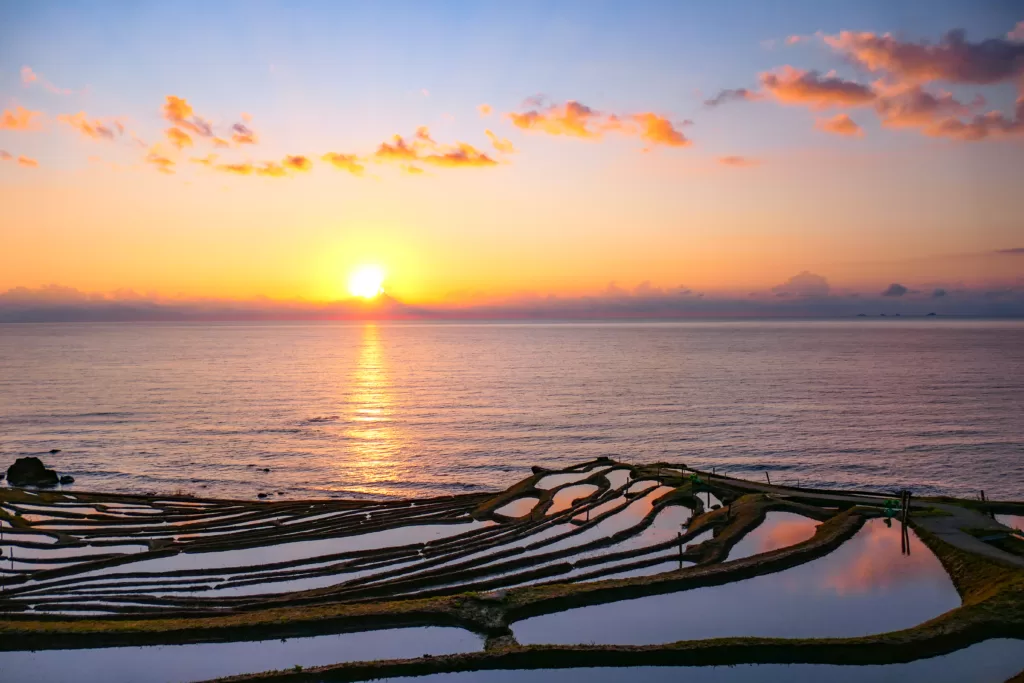
“Senmaida” translates to “thousand rice paddies,” referring to the countless small rice terraces that cover the hillside. The name “Shiroyone” means “white rice field,” reflecting the color of the rice during harvest season.
The terraces have been meticulously maintained for centuries, representing the traditional farming practices of the region. The small, narrow rice paddies create a visually stunning landscape, especially during the planting and harvesting seasons. The terraces are often illuminated during the evenings, adding to the picturesque charm.
We can learn about rice cultivation, enjoy scenic views, and even participate in hands-on experiences like planting and harvesting, depending on the season and available activities.
The best time to visit Shiroyone Senmaida is during the planting season in May or the harvest season in September when the rice fields are most vibrant. However, the terraces offer picturesque views throughout the year, with the changing colors of the rice plants and the surrounding landscape.
↣ Arashiyama Bamboo Grove [Kyoto Prefecture]
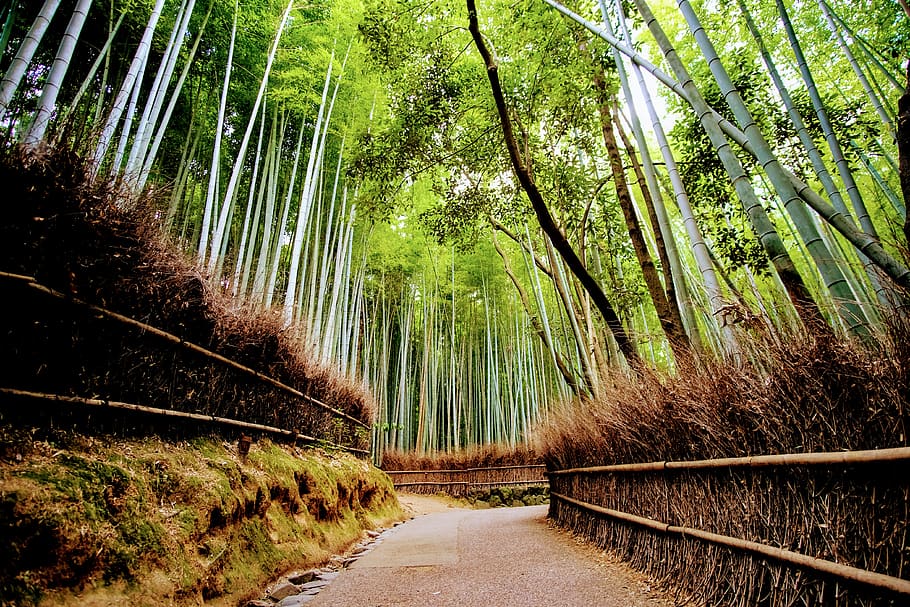
It is famous for its towering bamboo stalks, creating a unique and picturesque environment. As you enter the grove, you’ll be surrounded by a mesmerizing pathway lined with towering bamboo shoots reaching up to 30 meters (98 feet).
The grove is particularly enchanting early in the morning or later in the evening when fewer visitors are present, allowing for a more peaceful and immersive experience. The sound of the bamboo rustling in the wind adds to the ambiance, making it a serene escape from the hustle and bustle of the city.
The Arashiyama Bamboo Grove is easily accessible from central Kyoto. We can reach it by taking the JR Sagano Line to Saga-Arashiyama Station or the Hankyu Arashiyama Line to Arashiyama Station. From there, it’s a short walk to the entrance of the bamboo grove.
↣ Tsunoshima Ohashi Bridge [Yamaguchi Prefecture]
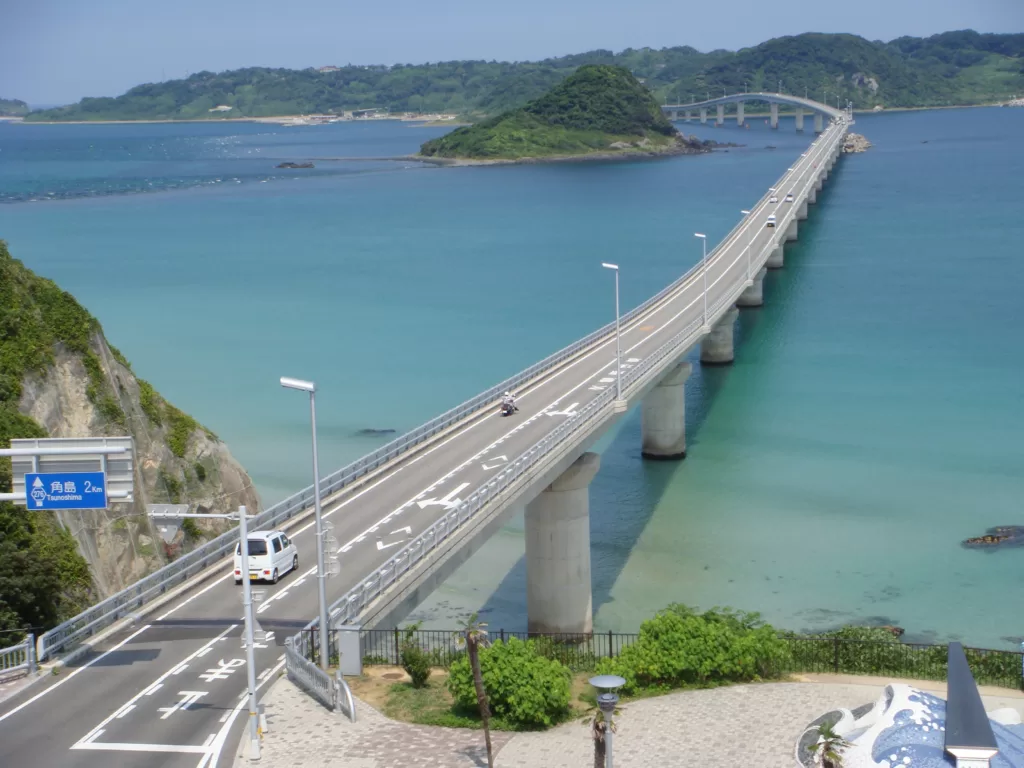
It connects the mainland of Honshu to Tsunoshima Island, spanning over the crystal-clear waters of the Sea of Japan. The bridge is considered one of the most scenic and picturesque bridges in the country, attracting numerous visitors for its stunning views.
One of the notable features of Tsunoshima Ohashi Bridge is its transparent blue color, which complements the azure waters below, giving it an ethereal appearance. The contrast between the bridge, the sea, and the island’s green landscape creates a visually striking scene.
On Tsunoshima Island, we can explore attractions such as Tsunoshima Lighthouse, which offers sweeping coastline views, and Tsunoshima Beach, known for its pristine white sand. The island is also great for scenic drives, shoreline walks, and picnics.
↣ Angel Road [Kagawa Prefecture]
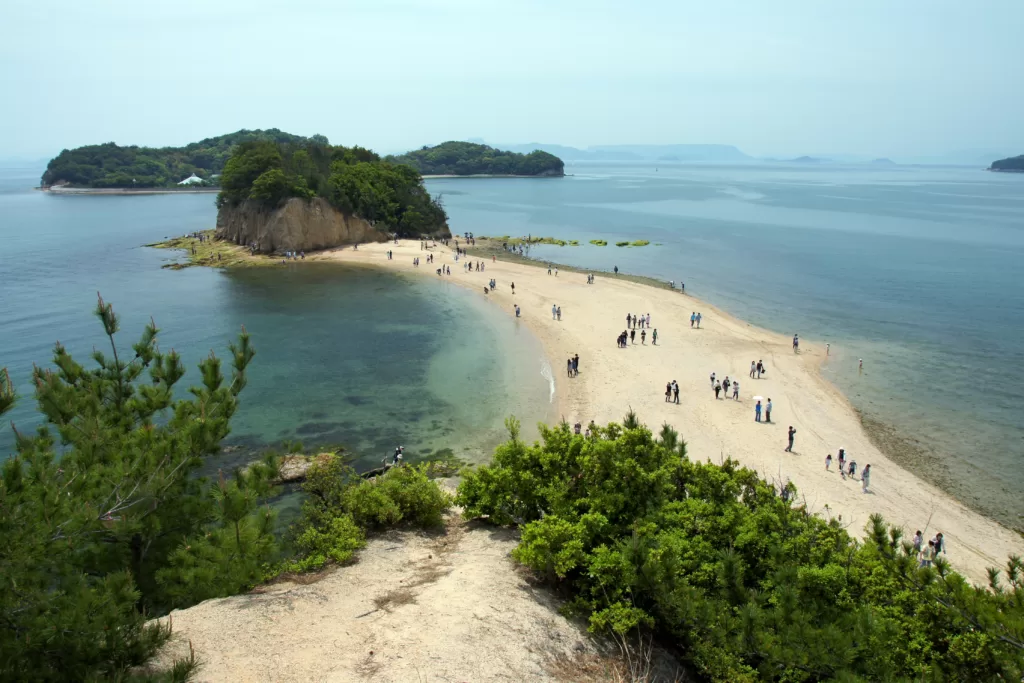
Angel Road offers picturesque views of the surrounding sea and landscape, making it a lovely place for photography and enjoying the area’s scenic beauty. The phenomenon is enhanced during sunrise and sunset when the changing colors of the sky create a magical atmosphere.
In addition to Angel Road, Shodoshima Island is known for its natural beauty, olive groves, and traditional soy sauce production. We can explore the island, visit olive-related attractions, try local cuisine, and relax in hot springs.
↣ Itoshima Peninsula [Fukuoka Prefecture]
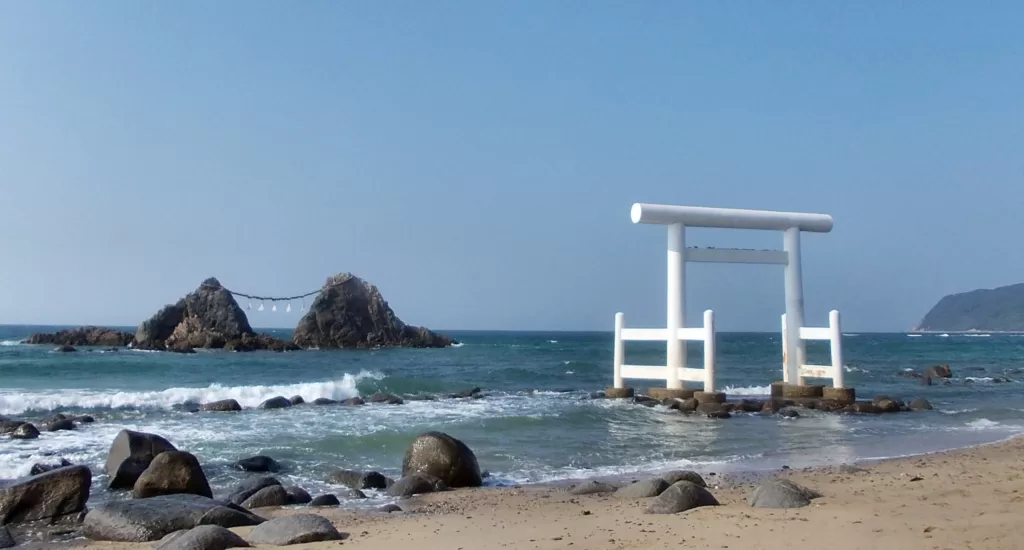
The peninsula offers a diverse range of attractions and activities. Its pristine sandy beaches, such as Futamigaura Beach and Sakuraihama Beach, attract people to relax, swim, and enjoy water sports during summer. The coastline is also dotted with dramatic cliffs, rocky formations, and stunning ocean views.
The area is rich in agriculture, with fields of crops and fruit orchards adding to its rural charm. You can find picturesque terraced rice fields and visit farms where you can experience fruit picking, such as strawberry or grape picking depending on the season.
In addition, it hosts various art events and festivals annually, providing opportunities to immerse yourself in the local arts and crafts scene. If you enjoy hiking or nature walks, Itoshima Peninsula offers several scenic trails. Mount Raizan and Mount Hachiman are popular hiking destinations, providing panoramic views of the peninsula and the surrounding area.
↣ Shikisai no Oka [Hokkaido]
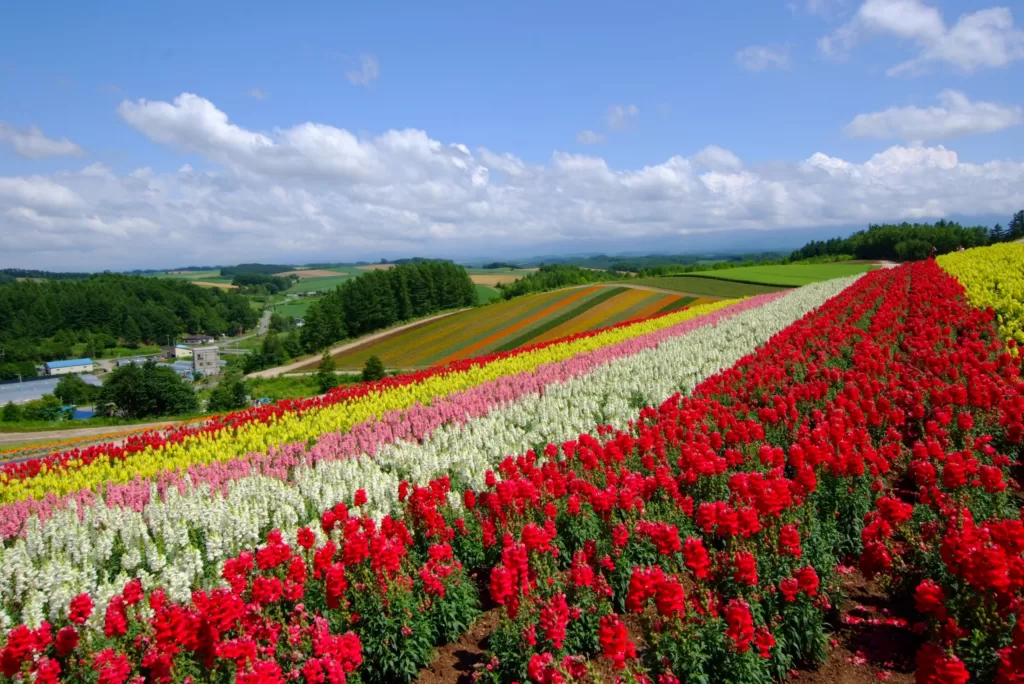
The garden showcases various flowers, including lavender, sunflowers, poppies, tulips, cosmos, and more. The blooming flowers create a mesmerizing tapestry of colors, creating a feast for the eyes and a dreamlike atmosphere.
In addition to the flower fields, Shikisai no Oka offers various attractions and activities. Small shops selling local produce, souvenirs, snacks, and restaurants serving regional dishes. We can also enjoy horse-drawn carriage rides and tractor rides and even try their hand at crafting experiences like making lavender-scented items.
The garden is open from spring to autumn, offering a different floral display each season. Lavender, in particular, is a major highlight during the summer months, attracting visitors from far and wide.
↣ Ginzan Onsen [Yamagata Prefecture]
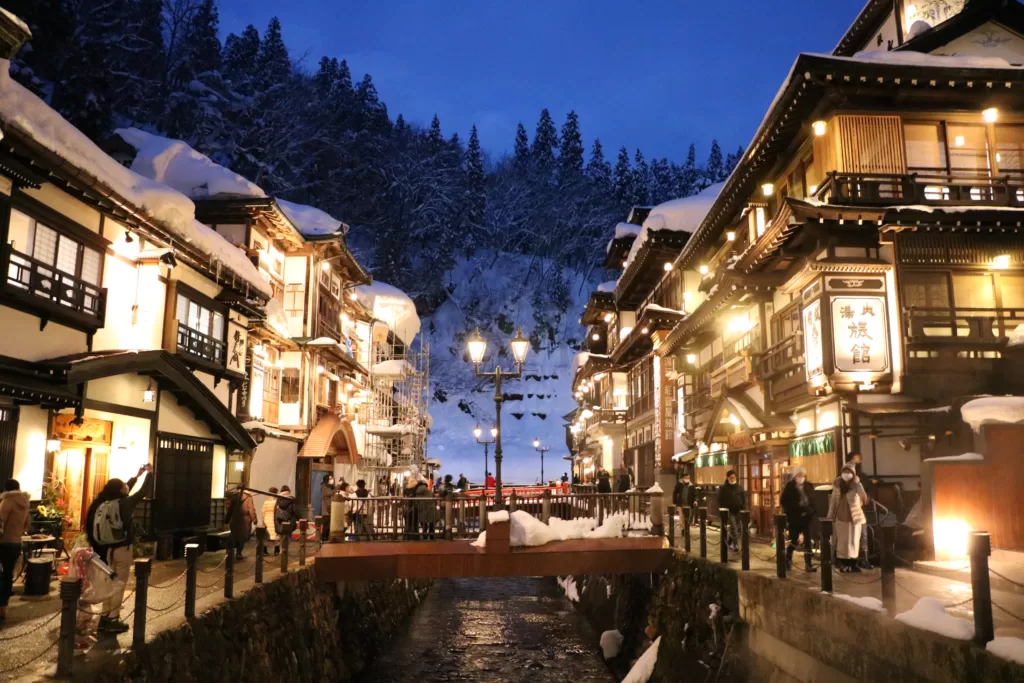
The town’s main feature is its traditional wooden ryokan (Japanese inns) lining the streets, originally built during the Edo period (1603-1868). The buildings have retained their historic architecture, creating a nostalgic ambiance that transports visitors back in time. The most iconic sight in Ginzan Onsen is the row of traditional ryokan along the Ginzan River, with their lantern-lit exteriors reflecting on the flowing water.
The town is especially enchanting when snow blankets the area during winter, creating a fairytale-like scene. The snow-covered buildings and streets, illuminated by lanterns, add to the magical ambiance and make Ginzan Onsen a popular spot for winter photography.
Ginzan Onsen is renowned for its hot springs, known as onsen, which are believed to have healing properties. We can enjoy soaking in the mineral-rich waters at various public bathhouses or private baths in the ryokan. The hot springs offer a relaxing and rejuvenating experience, especially against the peaceful mountain surroundings.
↣ Hitachi Seaside Park [Ibaraki Prefecture]
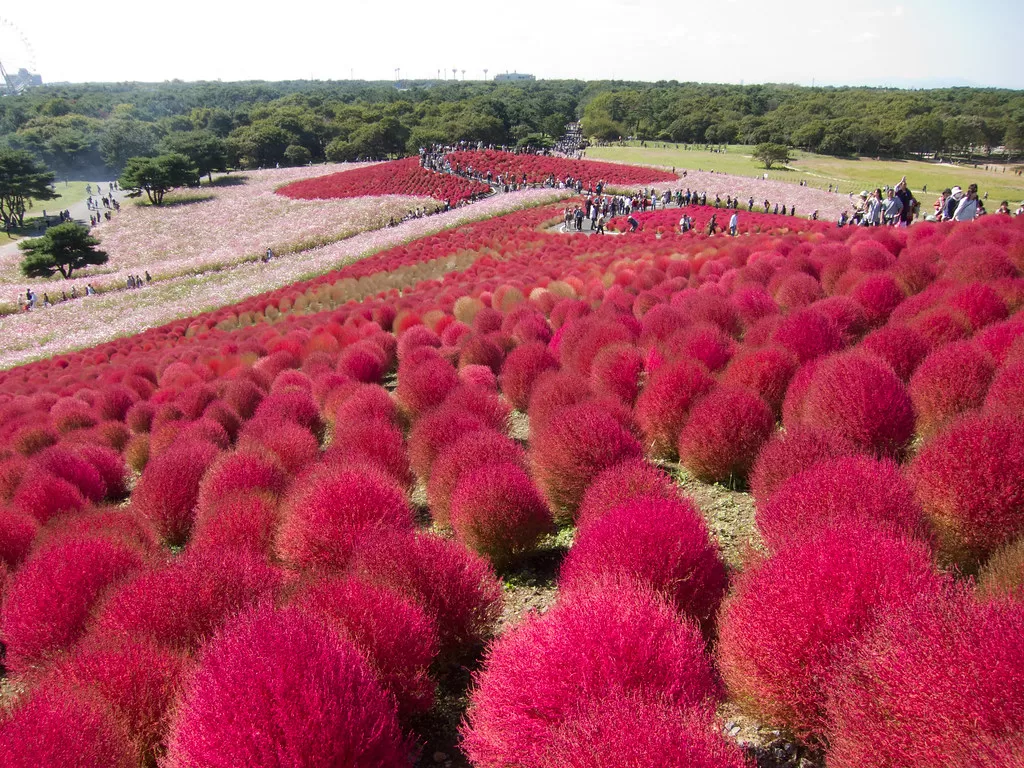
One of the main highlights of Hitachi Seaside Park is the expansive flower fields that cover the park grounds. The park is famous for its Nemophila Harmony, also known as “baby blue eyes.”
Millions of blue nemophila flowers blanket Miharashi Hill from late April to early May, creating a breathtaking blue carpet. The sign is incredibly picturesque and draws crowds of visitors eager to capture the mesmerizing scenery.
In addition to the nemophila, the park showcases a variety of other flowers and plants throughout the year. Vibrant tulips bloom in spring, followed by colorful roses in early summer. Later in the season, sunflowers and the cosmos add bright colors to the fields. The park’s floral displays change with each season, ensuring there is always something beautiful to see.
↣ Arakurayama Sengen Park [Yamanashi Prefecture]
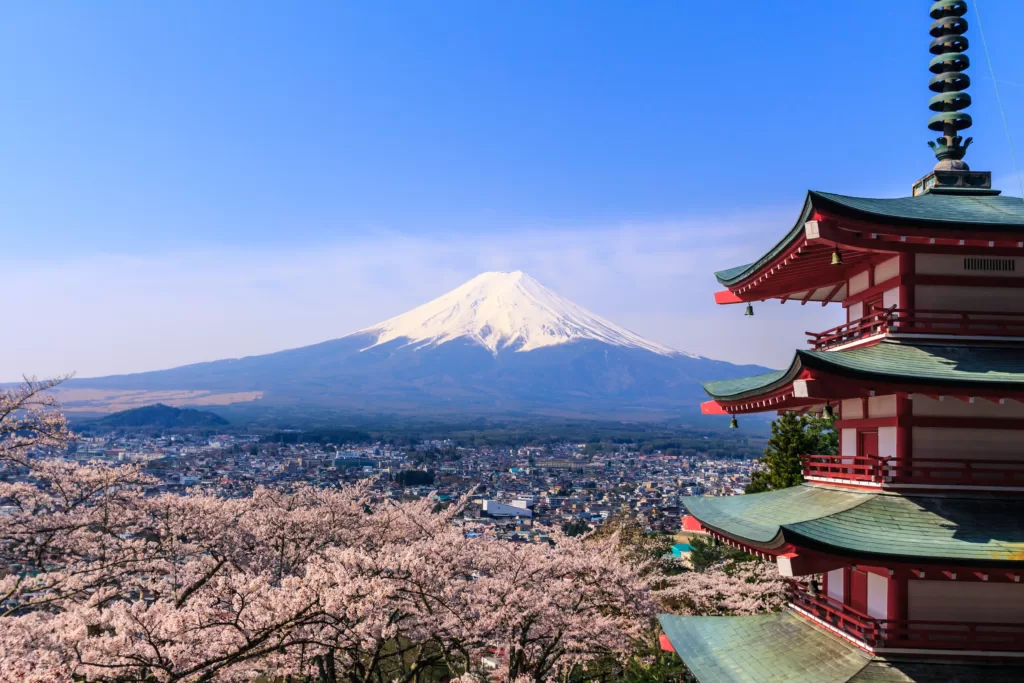
Arakurayama Sengen Park, also known as Arakura Fuji Sengen Shrine. It is renowned for its stunning views of Mount Fuji, one of Japan’s most iconic symbols.
The park is on a hillside, providing an excellent vantage point to admire Mount Fuji and the surrounding landscape. The park’s highlight is the Chureito Pagoda, a five-story pagoda at the top of a long staircase. The pagoda is an iconic structure and a favorite subject for photographers, especially during cherry blossom season when the trees in the park are in full bloom.
We must climb approximately 400 steps to reach the pagoda, which can be challenging for some. However, the reward at the top is well worth the effort, as you are greeted with a breathtaking view of Mount Fuji framed by the pagoda and cherry blossom trees. This picturesque scene is particularly stunning during spring when the cherry blossoms create a vibrant pink canopy around the pagoda.
↣ Kamikochi [Nagano Prefecture]
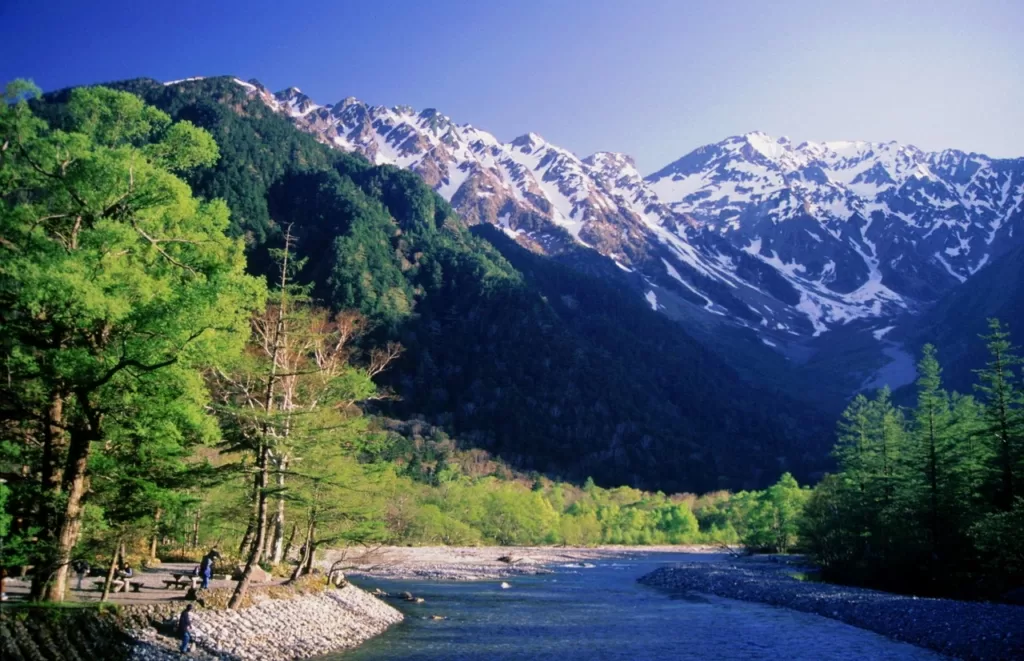
The main attraction in Kamikochi is the Kamikochi Valley, which stretches about 15 kilometers along the Azusa River. The valley is surrounded by towering mountains, including the iconic Hotaka Mountains, which provide a dramatic backdrop. We can enjoy leisurely walks or hikes along the well-maintained trails alongside the river, offering opportunities to immerse ourselves in nature and enjoy the magnificent scenery.
One of the most popular spots in Kamikochi is Kappa Bridge, a picturesque wooden suspension bridge that crosses the Azusa River. It offers a fantastic vantage point to admire the crystal-clear waters and the surrounding mountain landscape. Kappa Bridge is also the starting point for many hiking trails that lead to various points of interest in the area.
↣ Jigoku Nozoki [Chiba Prefecture]
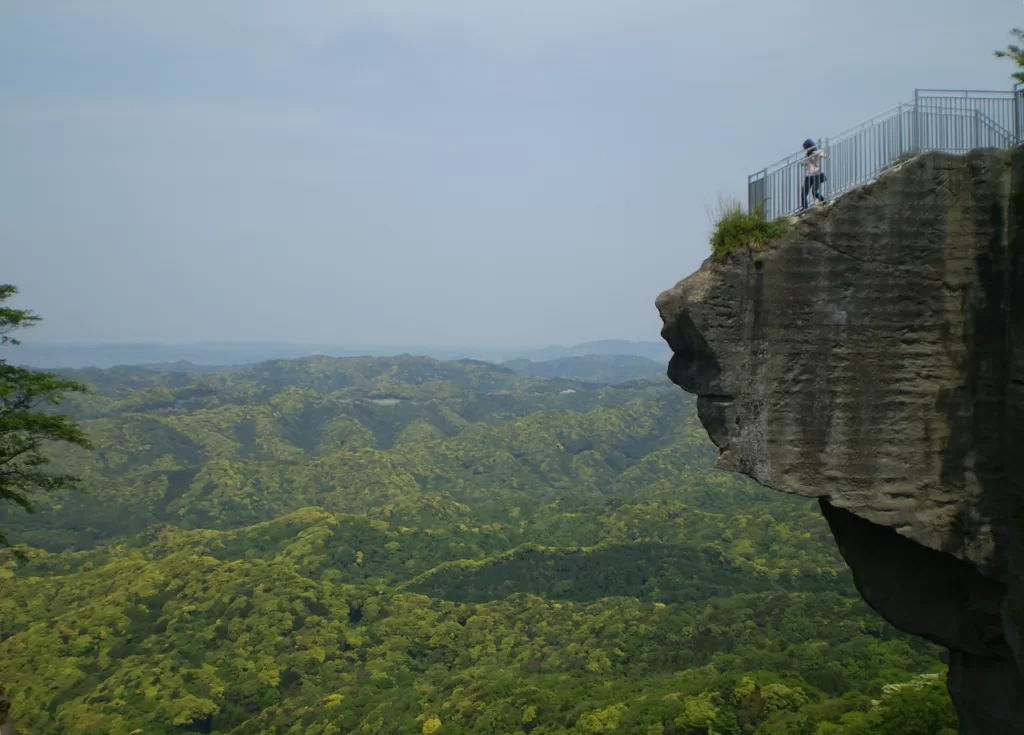
Jigoku Nozoki is part of the scenic Boso Peninsula, known for its rugged coastline and natural beauty. The cliffs at Jigoku Nozoki offer a unique vantage point where visitors can peer down into the deep, turbulent waters below, calling it “Hell’s Peek.”
The area is renowned for its stunning sunsets, as the unobstructed cliff views provide a picturesque backdrop for watching the sun dip below the horizon. The combination of rugged cliffs, crashing waves, and colorful skies create a captivating and dramatic atmosphere.
We can enjoy leisurely walks along the cliffside, capturing photos, or simply immerse ourselves in the awe-inspiring coastal scenery.
↣ Tottori Sand Dunes [Tottori Prefecture]
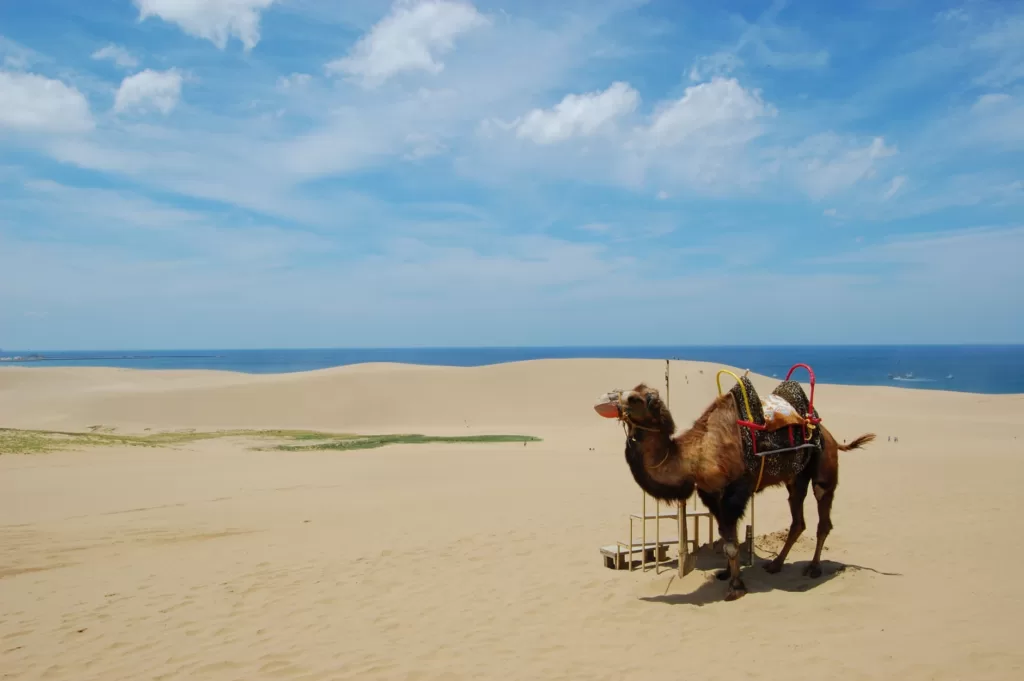
The Tottori Sand Dunes, also known as Tottori Sakyu, is a unique natural wonder in Tottori Prefecture, Japan. They are the largest sand dunes in the country and one of the top tourist attractions in the region.
Stretching along the coast of the Sea of Japan, the Tottori Sand Dunes covers an area of approximately 30 square kilometers. The dunes reach heights of up to 50 meters and span a length of about 16 kilometers from east to west. The shifting sands and distinctive patterns the wind create make the dunes an ever-changing landscape.
We can explore the area on foot or by riding a camel, a popular tourist activity. Walking along the sandy paths, you can appreciate the vastness of the dunes and enjoy panoramic views of the sea and surrounding scenery.
↣ Takachiho Gorge [Miyazaki Prefecture]
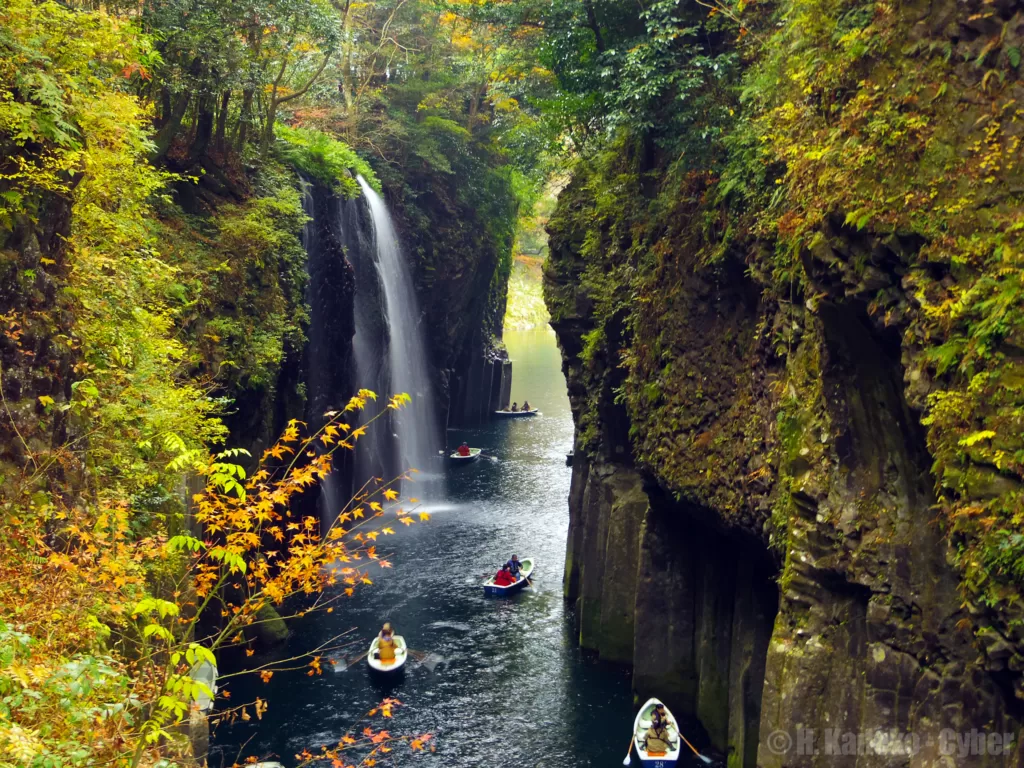
The gorge was formed by volcanic activity in ancient times, and erosion by the Gokase River has created a deep, narrow gorge with towering basalt cliffs that reach heights of up to 100 meters. Combining the dramatic cliffs and the emerald-green river creates a breathtaking and picturesque landscape.
One of the main attractions in Takachiho Gorge is Manai Falls, a beautiful waterfall that drops from a height of approximately 17 meters into a deep pool below. The sight and sound of the cascading water against the backdrop of the gorge are truly mesmerizing.
To fully experience the beauty of Takachiho Gorge, it is recommended to take a boat ride along the river. Rowboats are available for rent, allowing visitors to explore the gorge leisurely. The boat ride offers a unique perspective of the towering cliffs and allows visitors to pass through the narrow sections of the gorge. The calm and peaceful surroundings, combined with the reflections of the cliffs on the water, create a serene and tranquil atmosphere.
↣ Narai-juku [Nagano Prefecture]
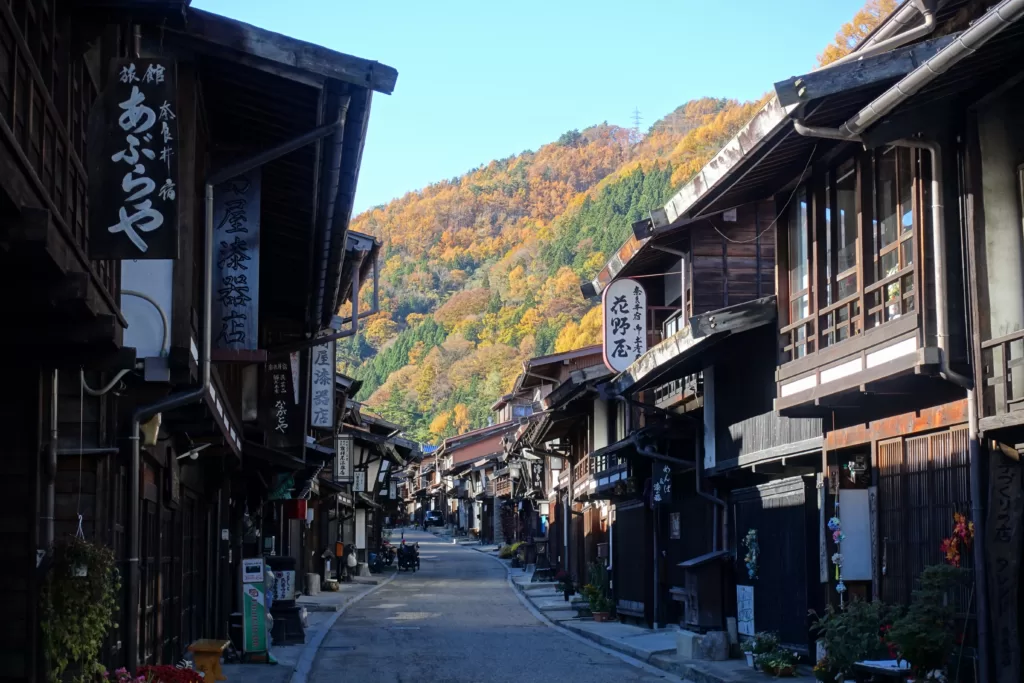
One of the five major routes connecting Kyoto and Edo (present-day Tokyo) during the Edo period (1603-1868). Narai-juku is known for its well-preserved traditional buildings, making it a popular destination for those seeking to experience Japan’s rich history and atmosphere.
The town of Narai-juku has retained much of its original charm and architectural heritage. Walking through the streets, visitors can admire the rows of well-preserved Edo-period buildings made of wood and black plaster walls. The Narai Kaido main street is lined with traditional wooden inns, shops, and restaurants serving travelers for centuries.
The atmosphere in Narai-juku takes you back in time, offering a glimpse into Japan’s feudal past. The town has been designated as an Important Preservation District for Groups of Traditional Buildings, and strict regulations are in place to maintain its historical integrity.



